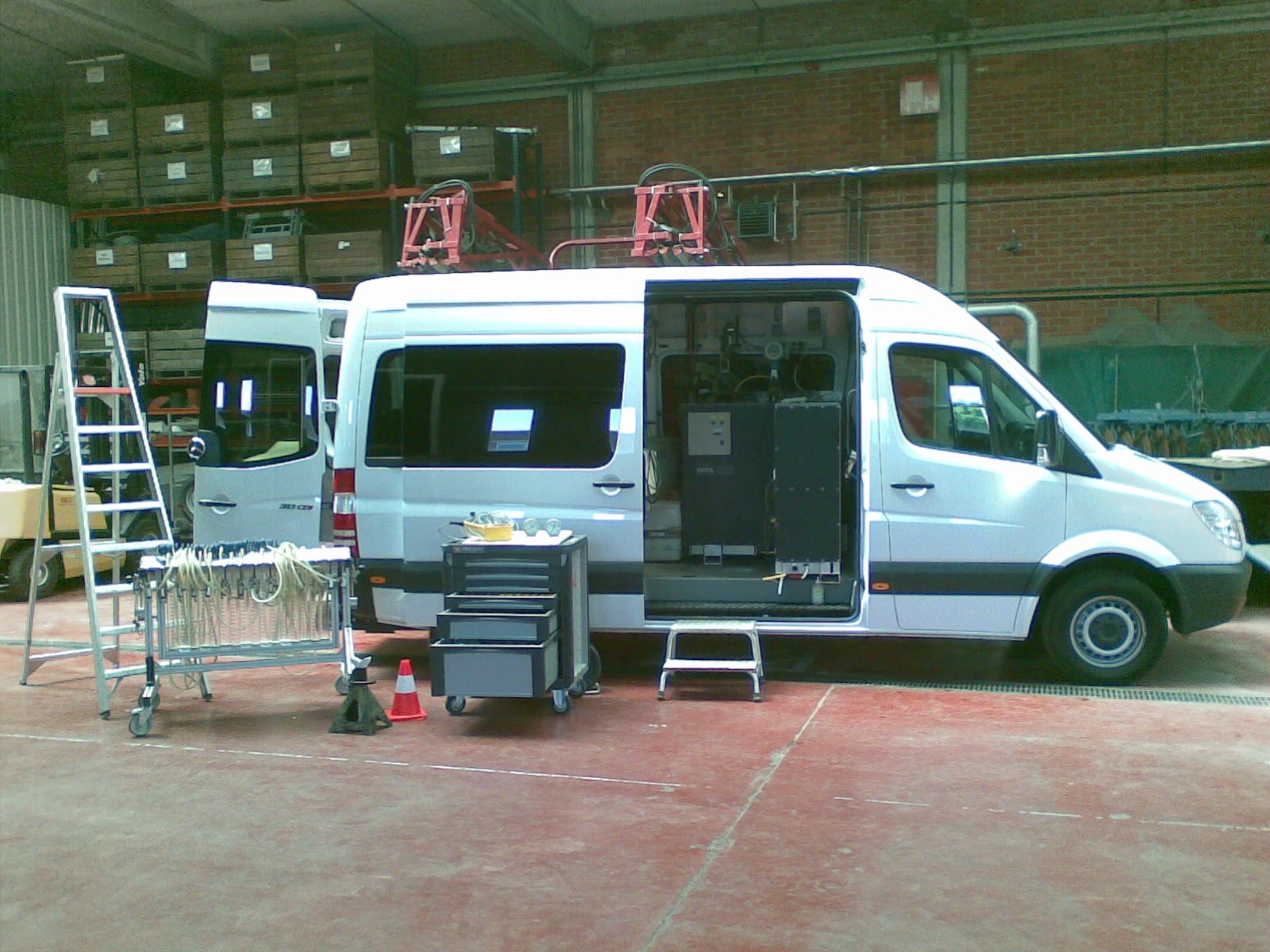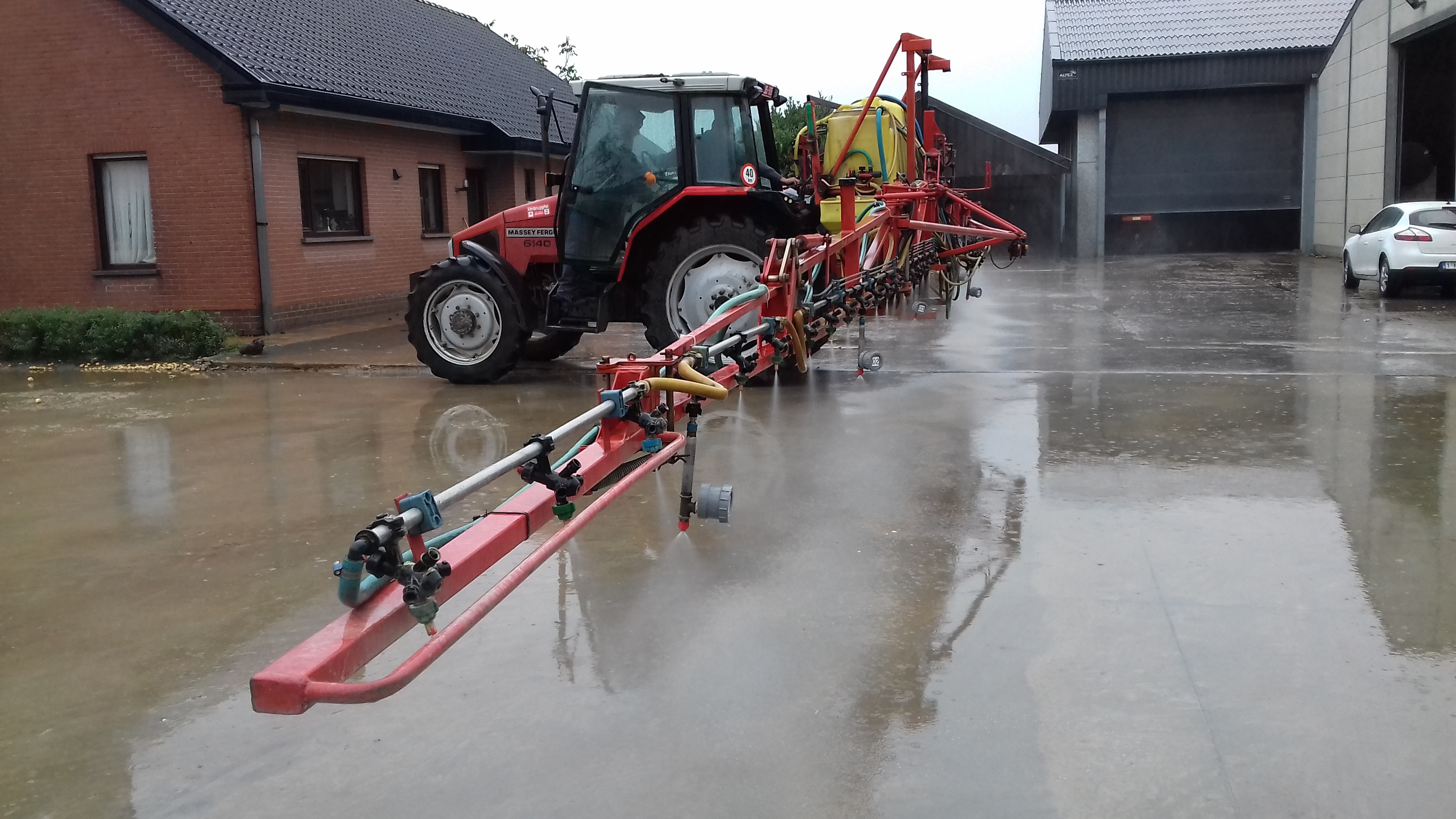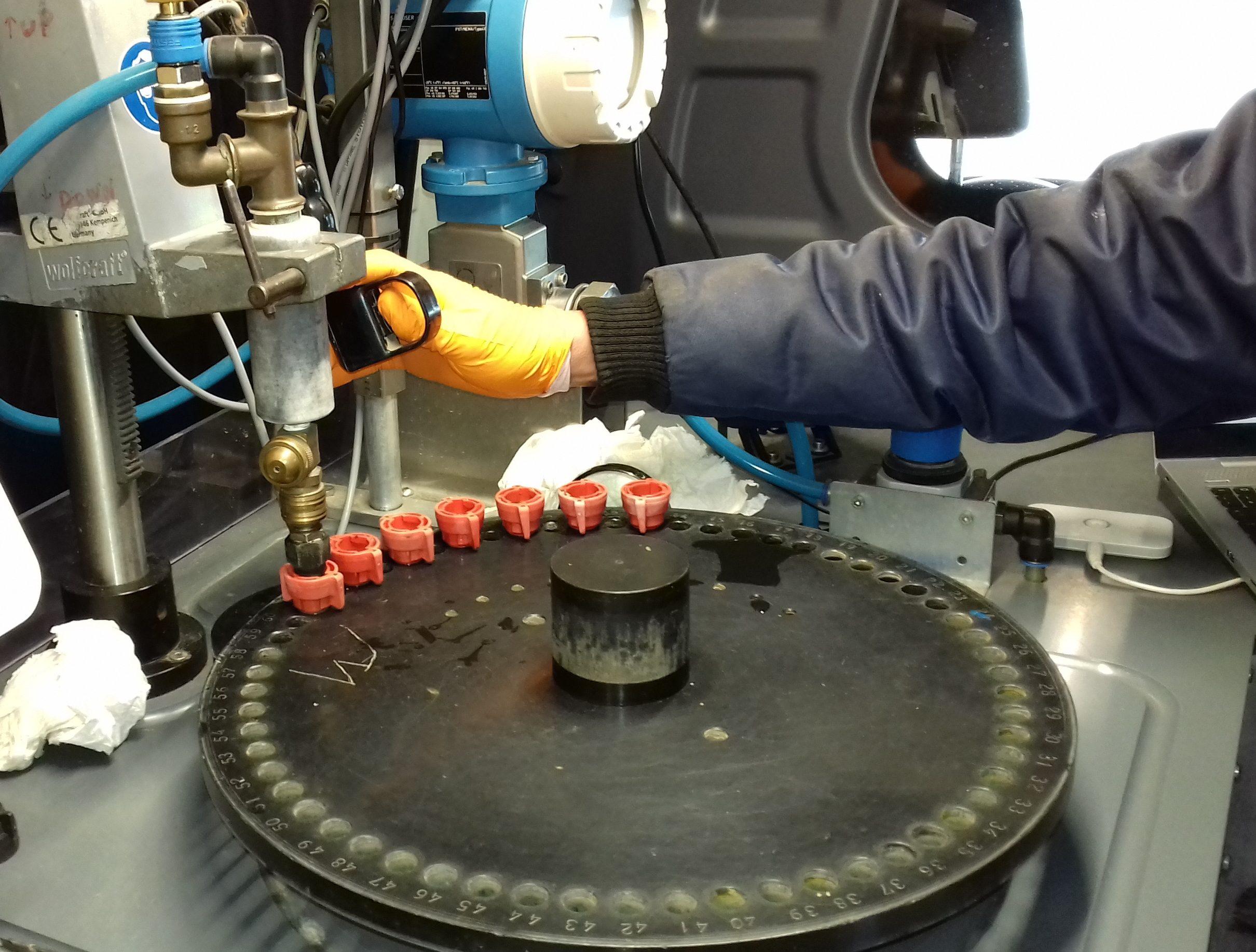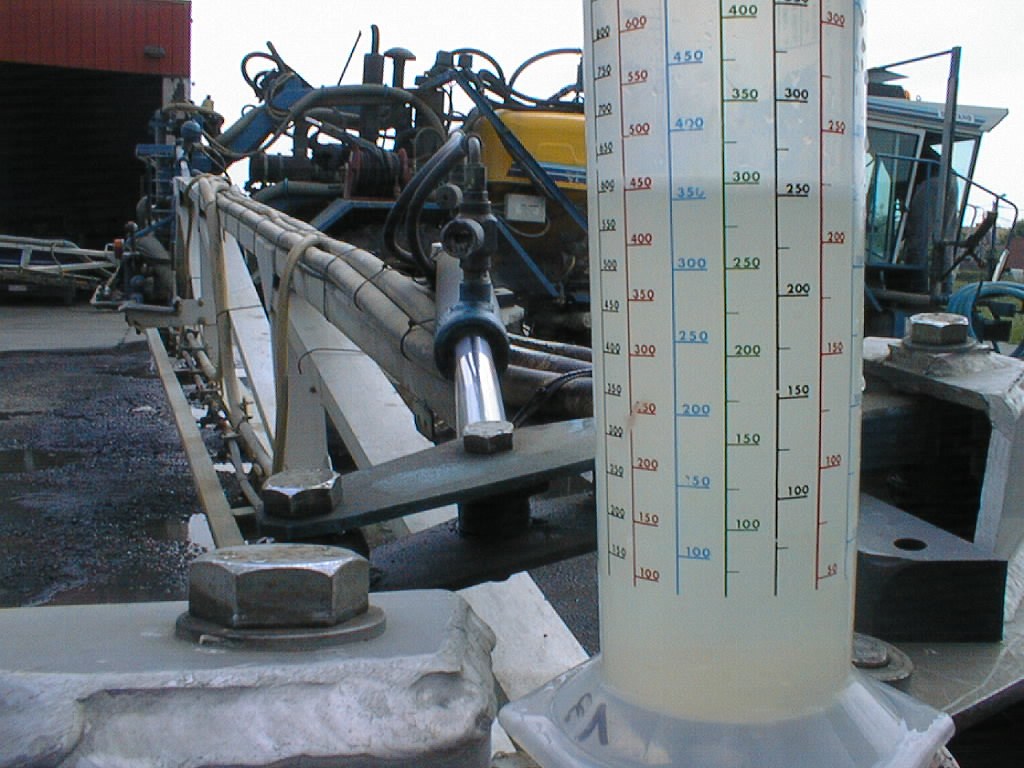Sprayer inspection
In Belgium, the compulsory inspection of sprayers in use was implemented in 1995 in the framework of the reform of the Agriculture Policy as a consequence of the CAP reform and GATT negotiations. Profitability, quality, security and environment were the key points of this reform.
The inspection concerns «all the sprayers that could be used to spray registered agricultural pesticides on the Belgian territory». It concerns mainly field crop and orchards sprayers but also greenhouse sprayers. The inspection is on a three-yearly basis.
The inspections are performed by official and mobile teams from the regional authorities (Agricultural Research Centres). The management of the inspection is done by the federal Ministry for Consumer Protection, Public Health and the Environment.

Test van with equipment
ILVO performs the inspections for the Flemish region, and therefore has 3 inspection teams which inspect about 13000 sprayers every 3 years. Between 10 and 16 sprayers are inspected each day by one team of 2 persons. ILVO hires locations all over Flanders and farmers are invited to present their sprayer on a fixed date and time on a location in their neighbourhood. ILVO sprayer inspection is also ISO17020 accredited in order to guarantee an objectivity and independency.
The compulsory inspection is based on the analytical principle and focuses on safety, clear and suitable measuring instruments, spray instrumentation and hydraulic equilibrium. The inspection method consists in measuring separately and independently the performances of the different parts of the sprayer (pressure gauge, nozzles, boom stability, pressure regulator, mixing of the tank, spray computer,…) to determine possible defects and to establish a precise diagnosis.
The defects noted during the diagnosis are divided into three different categories.

Measuring pressure in different boom sections
Category I defects are defects that automatically entail a rejection. Faults within this category must be repaired within four months and the sprayer should be submitted for retesting.
Category II defects do not result in rejection, but should be repaired by the next inspection during the inspection interval. This means that the user has three years time (= one inspection cycle) to repair these defects.
Defects of category III are only added for comment and are aimed to improve the general operation of the sprayer. The user is completely free to follow these comments.

Testing nozzles on a nozzle test bench
After every three year inspection cycle, the classification of all defects is revised in a steering committee. So category II defects could end up in category I defects but also vice versa is possible.
At this moment less than 15% of the inspected sprayers are rejected during the first passage.
The farmers are as much as possible involved in the actual inspection and advice is given to the farmers about possible effects. All test results are registered in an official test report.
Since the start up of the inspection in Belgium, farmers became far more aware of the negative effects of a badly maintained sprayer resulting in a significant decrease of the number of rejections.

Measuring cup